Build your societal impact reputation with Pure
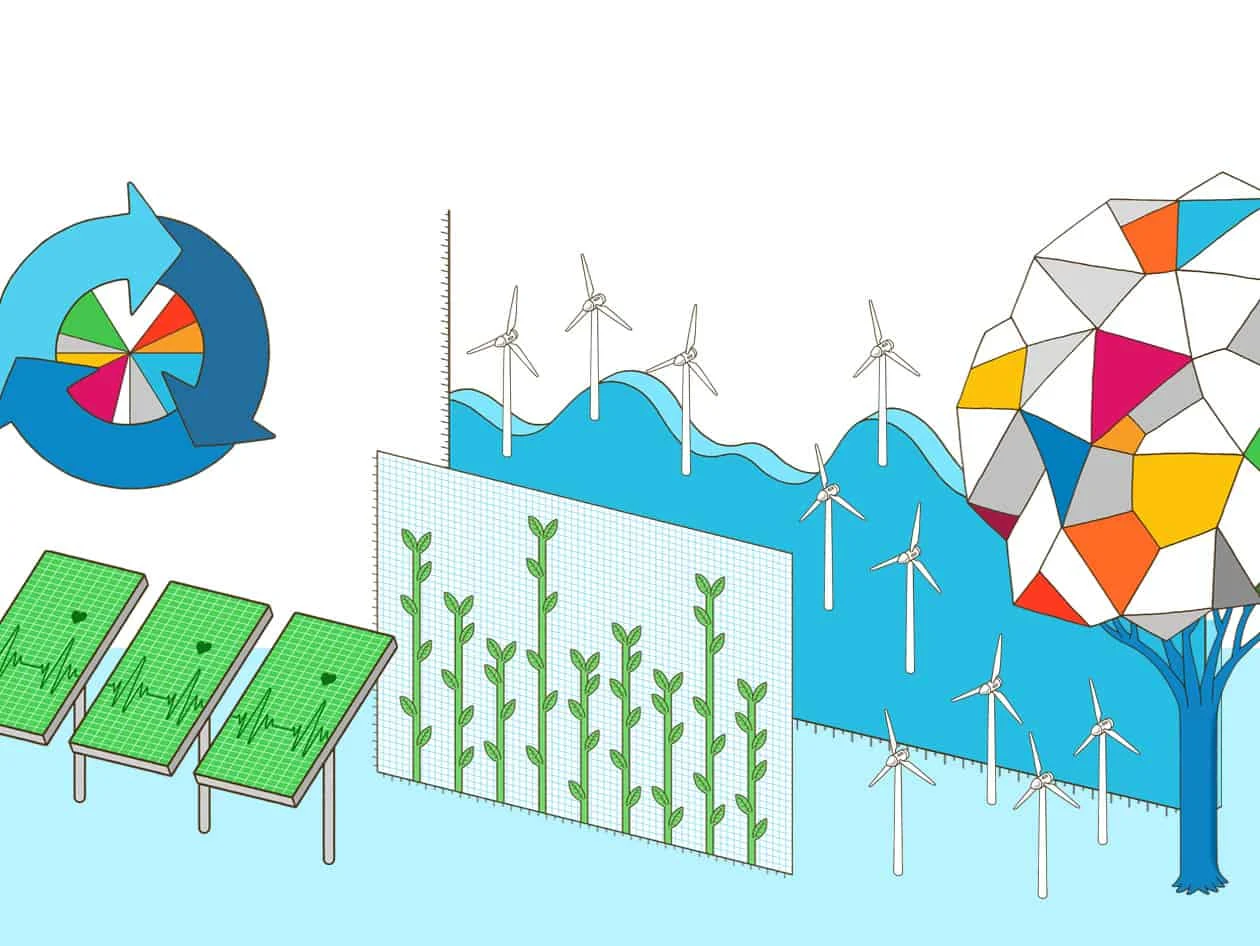
What is your university’s role in Societal Impact?
Increasingly, university leadership, governments, funders, the community, and others are demanding to understand the value of university research. They want to know that the significant investment in research is going to help society.
Munk et al. (2017) in the article, Five Ways Universities are Organising Themselves to Increase Societal Impact, recognize this importance:
Aside from the major responsibility of education and knowledge, what purpose do universities serve? Many academic institutions around world are beginning to recognise their role in creating political, economic and social value, as well as their ability to become an ‘embedded brain’ within society. The vast resources, research capabilities and connections which universities hold can foster, promote, and lead social innovation globally.
Societal impact guide
Learn about what societal impact and the UN SDGs mean to your university.
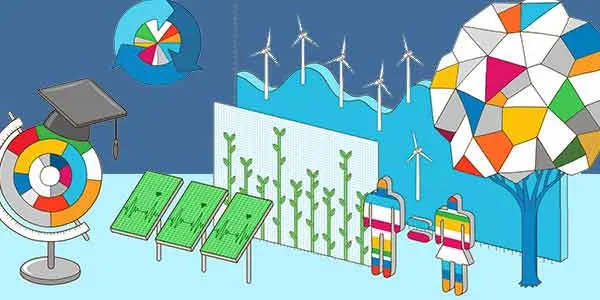
A university can contribute to societal impact in multiple ways. For example:
Policies to ensure food on campus is sustainably farmed
Access to mental health for students and faculty
Upgrading existing buildings to a higher energy efficiency rating
Download this article in PDF format 新しいタブ/ウィンドウで開く
Another central area where universities demonstrate societal impact is with the research they do. When a university participates in research that brings solutions to society, they act as part of the community to solve the world’s problems.
Why is it important to showcase your SDG-related research?
Some important reasons to share the work you are doing in research that contributes to the SDGs:
Students want to attend a university that demonstrates a commitment to sustainability
Faculty want to work on solving big societal problems
Reputation is often affected by the perception of the university and what it does to
Times Higher Education held the Innovation & Impact Summit in April 2021. At this event was a panel titled, “The power of profile: How universities are using evidence of their impact to build global reputation impact.” A participant said that talking about sustainable development gives you a whole new way of talking about what you do at universities and how you contribute to society in various ways.
How can the Pure Research Information Management System (RIMS) help?
Times Higher Education (THE), Vertigo Ventures, Elsevier and others collaborated on developing search queries to represent the research in the first 16 SDGs. Full details of the methodology for each SDG search query are available on Mendeley 新しいタブ/ウィンドウで開く.

Using the same search strings, Pure identifies the research belonging to the correct sustainable development goal. You can also add these manually. Pure then highlights these in many ways, from the Portal to Reporting.
Pure Portal
The Pure Portal is the public-facing part of this Research Information System solution (RIMS). It enables you to exhibit your organization externally, promote your researchers and their accomplishments, and facilitate collaboration, and most importantly, contribute to your reputation.
Now, you can highlight the SDG research on your Pure Portal home page. Below are examples from the University of Rosario 新しいタブ/ウィンドウで開く.

The Pure Portal showcases your SDG-related research for discovery
You can click on any of the SDG icons for a summary of the activity within that goal. To the right is the information for SDG 16: Peace, justice and strong institutions.

Researchers
Pure tags each researcher with the sustainability areas in which they are involved. As you can see from the above example, three researchers are highlighted under SDG 16. From the Portal home page, you can navigate to these researchers.
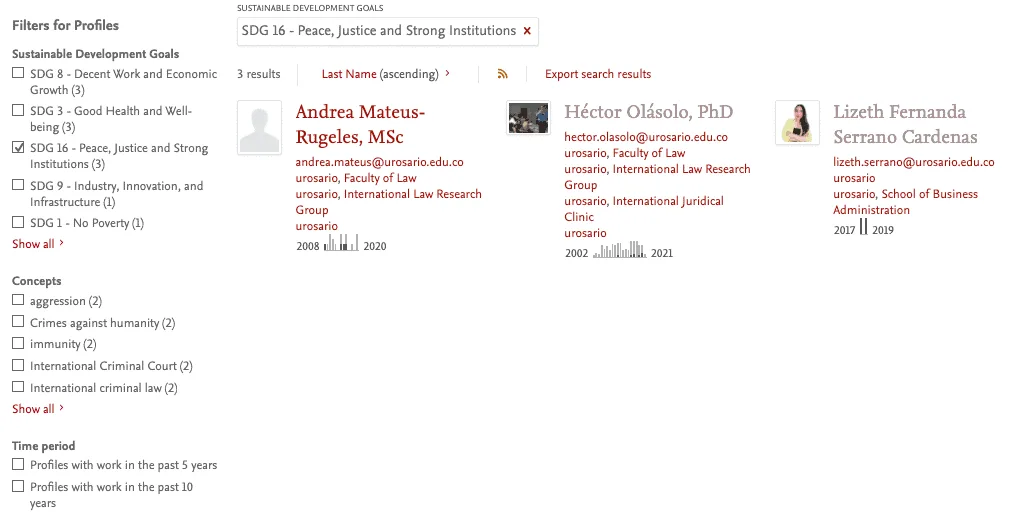
Filter the researchers by their associated SDGs to find potential partners and more.
You can get even more information by looking at the researcher’s profile.
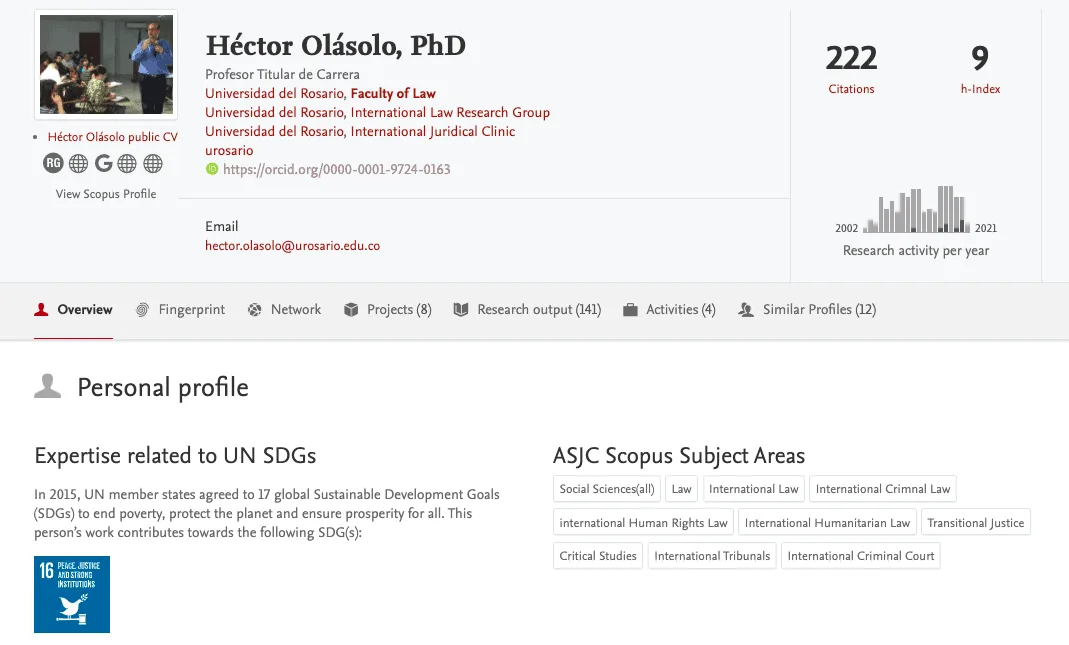
By looking at the researcher’s profile, you have more information to help you understand this person. For example, Dr. Héctor Olásolo is in the faculty of the law school.
In the Pure profile, you can find out more about this researcher including, CV, what departments they are associated with, and their recent collaboration network.
For even more detail about the author’s publications, you can also view his profile in Scopus.

Scopus provides even more information about this author, including the topics he publishes in most frequently.
Scopus provides even more information about Dr. Héctor Olásolo. For example, he publishes on several topics, including International Criminal Court, Criminal Tribunals, Crimes Against Humanity.
Research output
Another way to discover research about the Sustainable Development Goals is to look at all the output related to a goal or goals.
In the example below, you can see a list of the SDG 16 output.
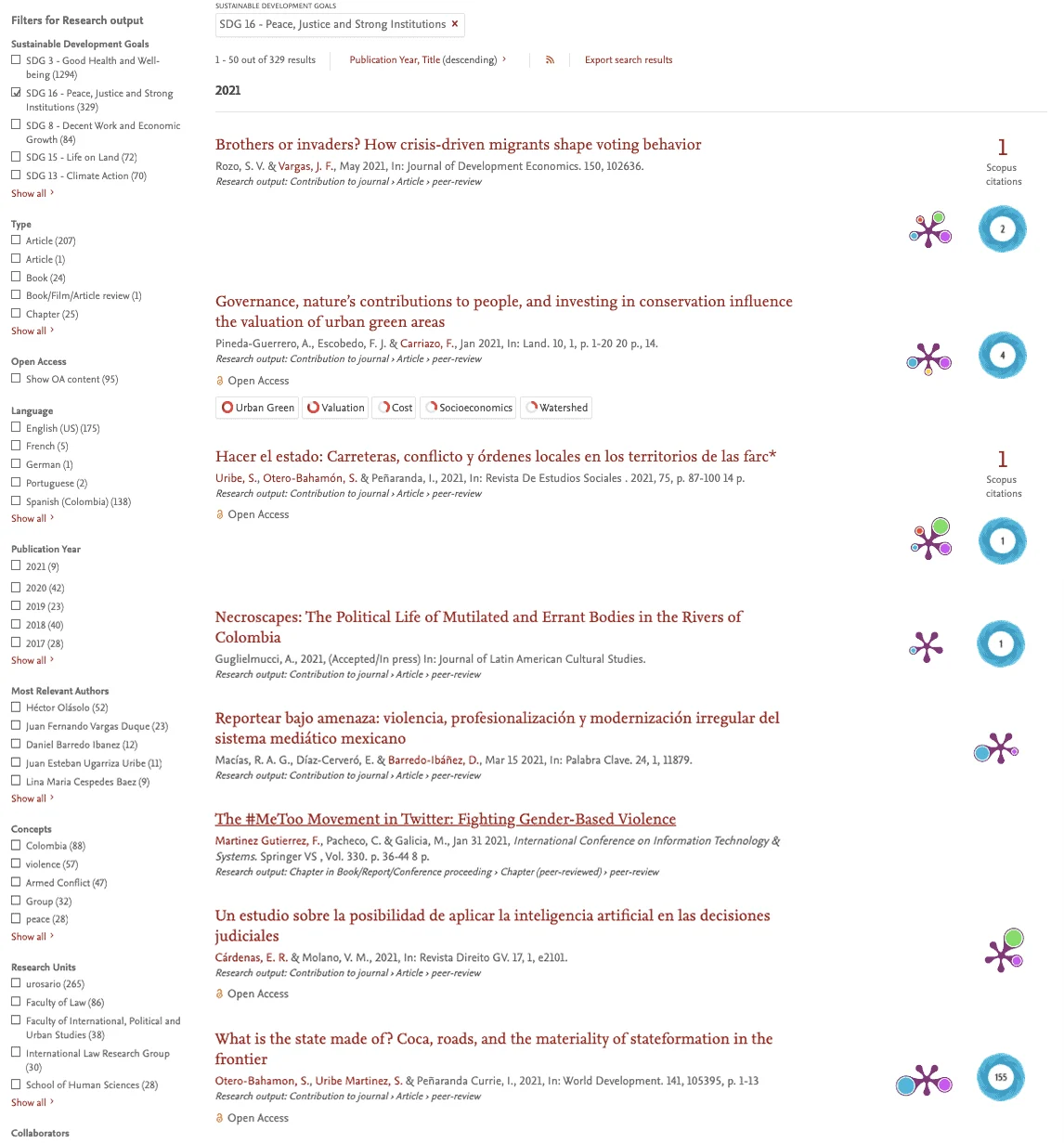
Pure gives you a list of all research output per SDG, providing an excellent way to build your reputation.
From here, you can use even more filters to see exactly what you want. For example, below we’ve filtered the output to the most recent year.
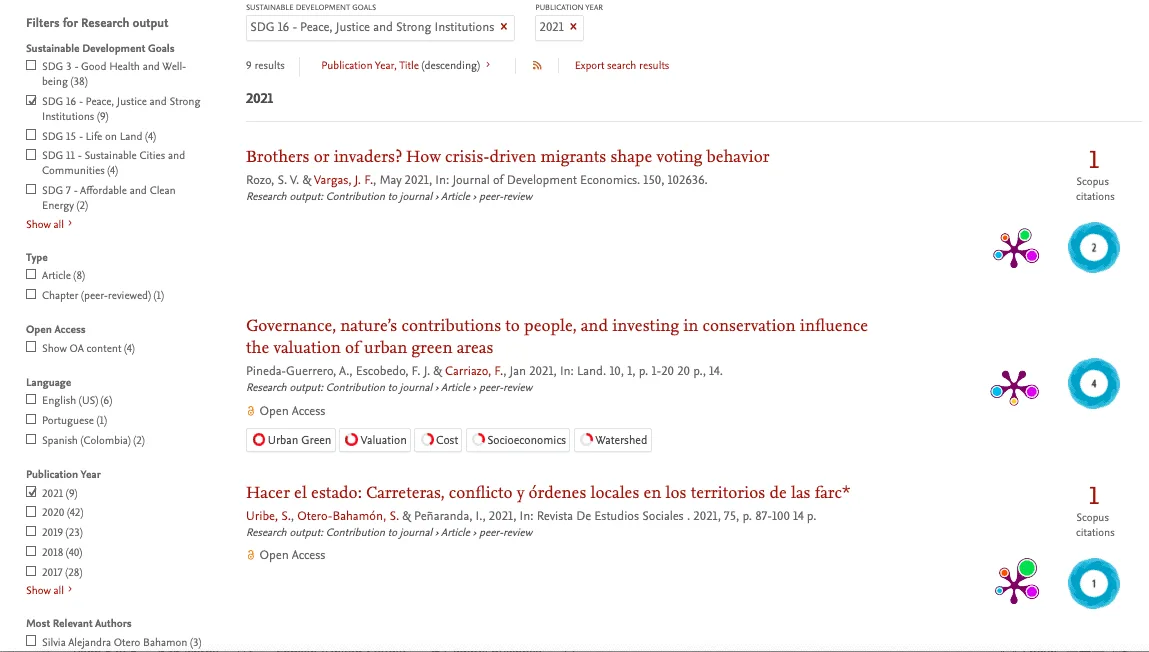
The most recent SDG 16 articles.
Reporting
While the Pure Portal is an excellent way to showcase your efforts on the UN Sustainable Development goals – and hence a lot of societal impact research – Pure provides reporting for internal users to understand their SDG-related research. This information can help inform communications, grant submissions, recruitment, and more.
In the example below, view a quick overview of the most and least active SDGs.
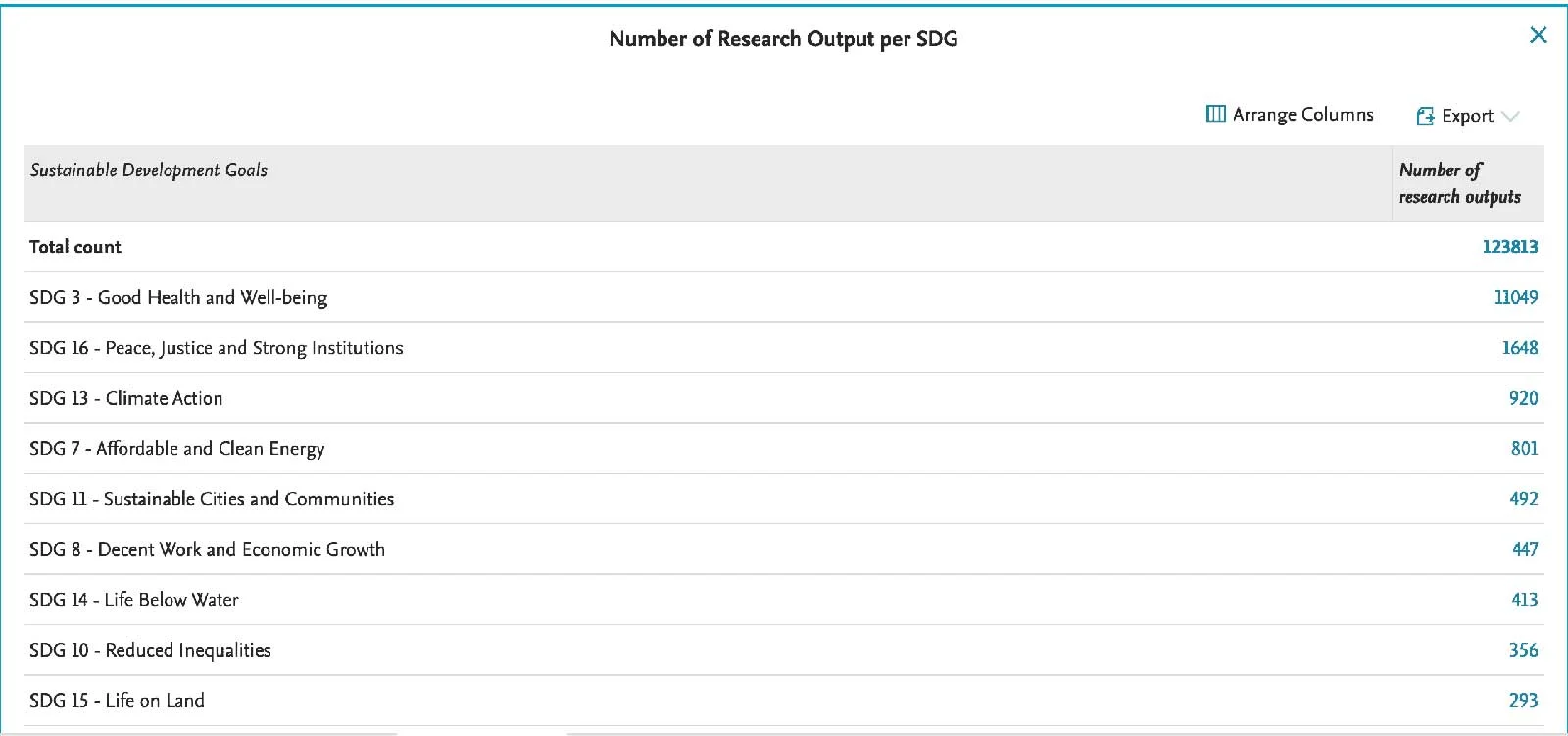
A quick look at the research output for each SDG for planning, communication, and more.
You can further see your top authors and departments as well. Allowing you to drill deeper and deeper for specific information to help inform strategy, reputation-building, collaboration opportunities and more.
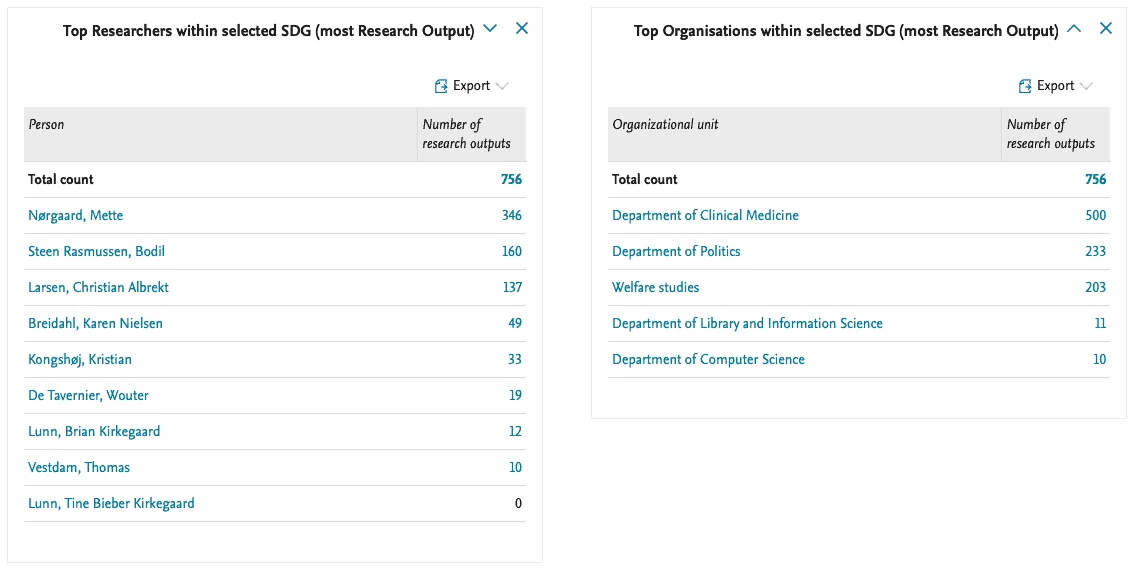
Explore the active researchers and departments in the SDGs.
Download this article in PDF format 新しいタブ/ウィンドウで開く
Tagging the research in Pure, with its associated SDG gives visibility into the work you are doing around these goals. These associations, in turn, can help you build your reputation. Since your students, faculty, and community care about your societal impact, using the SDGs can be a good proxy for demonstrating it.1